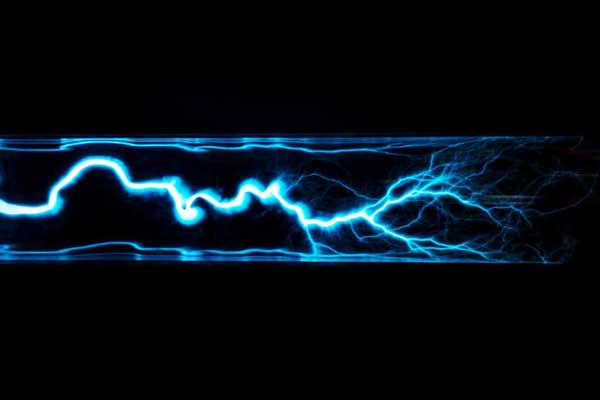Methods of electrostatic protection
 Release Time:2020-08-06 16:58
Release Time:2020-08-06 16:58 Read:142 次
Read:142 次
With the development of science and technology, electrostatic phenomenon has been widely and effectively applied in the fields of electrostatic spraying, electrostatic spinning, electrostatic sorting, electrostatic imaging and so on. But on the other hand, the generation of static electricity will bring great harm and loss in many fields. For example, in the electronics industry, as the degree of integration becomes higher and higher, the inner insulating layer of integrated circuits is getting thinner and thinner, and the width and spacing of interconnecting wires are getting smaller and smaller. The typical thickness of the insulating layer for CMOS devices is about 0.1 μm. The corresponding breakdown voltage is 80-100V; the insulating layer of VMOS devices is thinner, and the breakdown voltage is 30V. In the process of manufacturing, transportation, and storage, static electricity often causes damage or breakdown of electronic components, resulting in losses. Therefore, electrostatic protection in production and transportation is indispensable. Li ESD focuses on the research of electrostatic protection . Below, I will share some methods of electrostatic protection. I hope it will be helpful to everyone.


The core of electrostatic protection is " static elimination ", and its principles are:
(1) Prevent static electricity from accumulating in places where static electricity may occur, and keep it in a safe range.
(2) Quickly eliminate the existing static electricity accumulation.
(3) Isolate static electricity from the product.
Methods of electrostatic protection
1. Prevent static electricity from accumulating in the place where static electricity may occur, and keep it in a safe range.
(1) Use of anti-static materials: Anti-static materials refer to materials that have the least amount of charge generated when the same material or other similar materials are rubbed or separated from each other. The surface resistance is generally between the 6th power of 10 and the 8th power of 10Ω.
The ground and workbenches in the factory area need to be anti-static materials, which can well prevent the accumulation of static electricity on the ground and workbench when people are walking or working.
(2) Control the ambient temperature: The increase in ambient humidity can increase the surface conductivity of non-conducting materials and make it difficult for static electricity to accumulate on the surface of the object.
2. Quickly eliminate the existing static electricity accumulation.
(1) Use a static eliminator such as an ion fan . The power air of the static eliminator generates a large number of positive and negative ions. When the fan is blown to the surface of the article, it can neutralize the static electricity of the static power source. (2) Use static eliminators Static eliminators are surfactants. The surface of the instrument and objects can be cleaned with static eliminator, which can quickly eliminate static electricity on the surface of the object. (3) Use an anti-static wrist strap. The anti-static wrist strap can put static electricity on the surface of the human body quickly to prevent people from generating static electricity when touching electronic equipment.
3. Isolate static electricity from the product. (1) Use anti -static equipment. Anti -static equipment for the human body: anti-static overalls, hats, gloves, shoes, socks, etc.Transport anti-static equipment: put in static packaging bags.
4. Grounding
Grounding is an indispensable part of electrostatic protection. Strictly speaking, the above three division methods are not good enough to explain grounding, so I take it out separately. It is because in processing, testing, repairing, testing, storage, turnover devices, tools, equipment and appliances, etc., electrostatic grounding should be carried out in all places that are harmful to static electricity.
Static grounding can be divided into soft grounding and hard grounding:
soft grounding means that the ground wire is connected in series with a resistor with higher resistance and then connected to the ground. The purpose of soft grounding is to limit the current to the ground below the personal safety range (usually 5 mA) and to ensure that the IC is not damaged.
Hard grounding refers to grounding the ground wire directly or through a low resistance grounding. Generally, hard grounding is used for electrostatic shielding or grounding of equipment and metal bodies.
(1) Prevent static electricity from accumulating in places where static electricity may occur, and keep it in a safe range.
(2) Quickly eliminate the existing static electricity accumulation.
(3) Isolate static electricity from the product.
Methods of electrostatic protection
1. Prevent static electricity from accumulating in the place where static electricity may occur, and keep it in a safe range.
(1) Use of anti-static materials: Anti-static materials refer to materials that have the least amount of charge generated when the same material or other similar materials are rubbed or separated from each other. The surface resistance is generally between the 6th power of 10 and the 8th power of 10Ω.
The ground and workbenches in the factory area need to be anti-static materials, which can well prevent the accumulation of static electricity on the ground and workbench when people are walking or working.
(2) Control the ambient temperature: The increase in ambient humidity can increase the surface conductivity of non-conducting materials and make it difficult for static electricity to accumulate on the surface of the object.
2. Quickly eliminate the existing static electricity accumulation.
(1) Use a static eliminator such as an ion fan . The power air of the static eliminator generates a large number of positive and negative ions. When the fan is blown to the surface of the article, it can neutralize the static electricity of the static power source. (2) Use static eliminators Static eliminators are surfactants. The surface of the instrument and objects can be cleaned with static eliminator, which can quickly eliminate static electricity on the surface of the object. (3) Use an anti-static wrist strap. The anti-static wrist strap can put static electricity on the surface of the human body quickly to prevent people from generating static electricity when touching electronic equipment.
3. Isolate static electricity from the product. (1) Use anti -static equipment. Anti -static equipment for the human body: anti-static overalls, hats, gloves, shoes, socks, etc.Transport anti-static equipment: put in static packaging bags.
4. Grounding
Grounding is an indispensable part of electrostatic protection. Strictly speaking, the above three division methods are not good enough to explain grounding, so I take it out separately. It is because in processing, testing, repairing, testing, storage, turnover devices, tools, equipment and appliances, etc., electrostatic grounding should be carried out in all places that are harmful to static electricity.
Static grounding can be divided into soft grounding and hard grounding:
soft grounding means that the ground wire is connected in series with a resistor with higher resistance and then connected to the ground. The purpose of soft grounding is to limit the current to the ground below the personal safety range (usually 5 mA) and to ensure that the IC is not damaged.
Hard grounding refers to grounding the ground wire directly or through a low resistance grounding. Generally, hard grounding is used for electrostatic shielding or grounding of equipment and metal bodies.




